
PROMO!
First order? Get 10% OFF with this code: 1storder
Written by
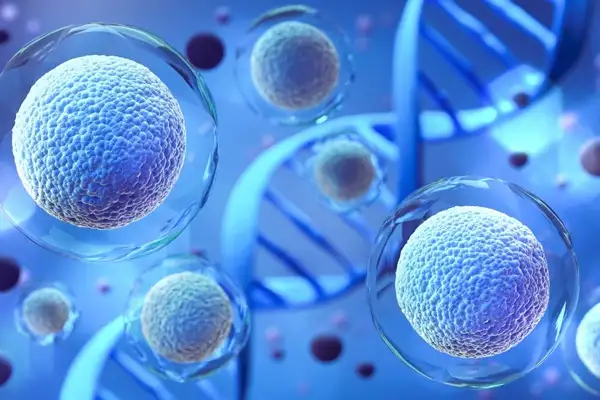
New studies look at how GHK-Cu peptide might help stem cells work better. This copper peptide shows good results when tested on cells.
Research suggests GHK-Cu peptide may boost tissue repair linked to stem cell function. Research shows it raises gene activity in healing models. Early data suggests it helps cells fix themselves better.
Remember, these peptides are only for research, not human use. Peptide Works ships quality research peptides to labs around the world.
Understanding stem cell activation raises an important question about the underlying mechanisms that make this process possible.
Explore GHK-Cu Peptide from Peptide Works, widely studied for its potential to boost collagen production, support tissue repair, and combat visible signs of aging.

GHK-Cu peptide works by changing how cells read their DNA instructions. This copper peptide can turn on helpful genes and turn off harmful ones.
Research shows it affects over thousands of genes in cells. The peptide helps cells make more collagen and healing proteins. It also stops genes that break down healthy tissue.
Studies show GHK-Cu changes gene expression to support better cell repair. These research findings help scientists understand how copper peptides work at the cellular level.
While knowing that thousands of genes are affected is fascinating, researchers want to understand exactly which genes are involved in this process.
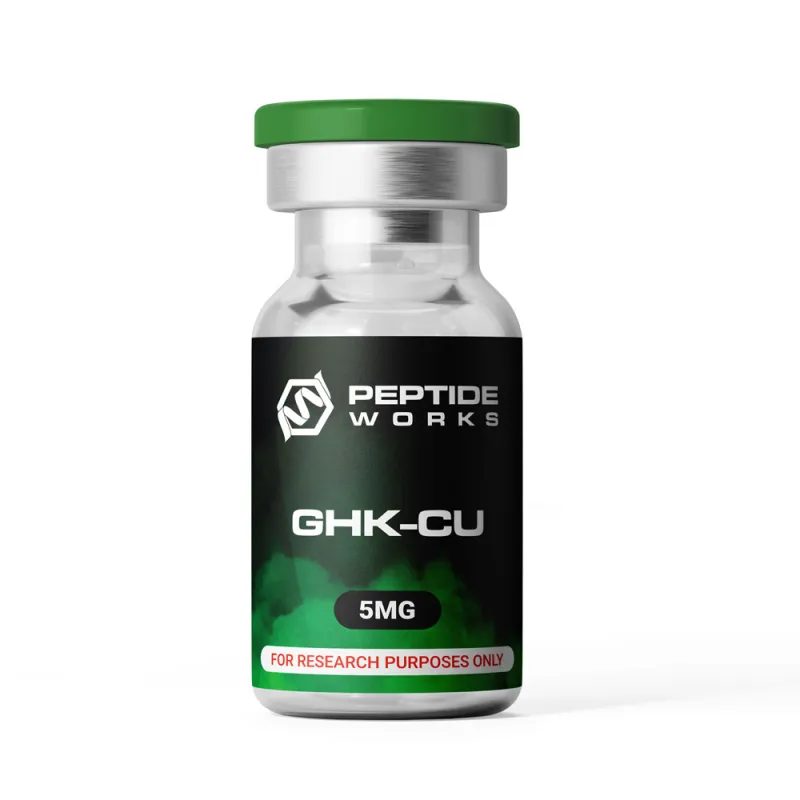
GHK-Cu peptide targets over 4,000 genes in human cells. Key targets include matrix metalloproteinase genes like MMP1 and MMP2 for tissue repair.
Research shows it affects DNA repair genes and antioxidant response pathways significantly. The peptide also affects collagen synthesis genes and inflammatory response genes.
DNA repair genes get activated to fix damaged cells. GHK-Cu peptide suppresses inflammatory genes like TNF-α that cause tissue damage and reduces harmful inflammation by lowering TNF-α and IL-6 levels.
These specific gene targets explain how the peptide helps cells stay healthy and repair damage. These gene targets create powerful effects that researchers are particularly interested in – especially how they translate into practical benefits for aging research.
The peptide increases expression of 14 antioxidant genes while suppressing 2 harmful genes. Research shows it can boost collagen synthesis up to 70% depending on context and study conditions.
GHK-Cu peptide activates DNA repair genes that fix cell damage from aging. Studies reveal it reduces iron release from ferritin by 87%, preventing free radical damage.
The peptide also suppresses inflammatory genes like TNF-alpha that speed up aging. In one double-blind trial comparing GHK-Cu vs Matrixyl 3000, effects reduced wrinkles by 31.6% and improved skin firmness.
Peptide Works provides research-grade peptides for anti-aging studies worldwide. With such impressive anti-aging results, many researchers wonder how GHK-Cu compares to other compounds being studied for similar benefits.
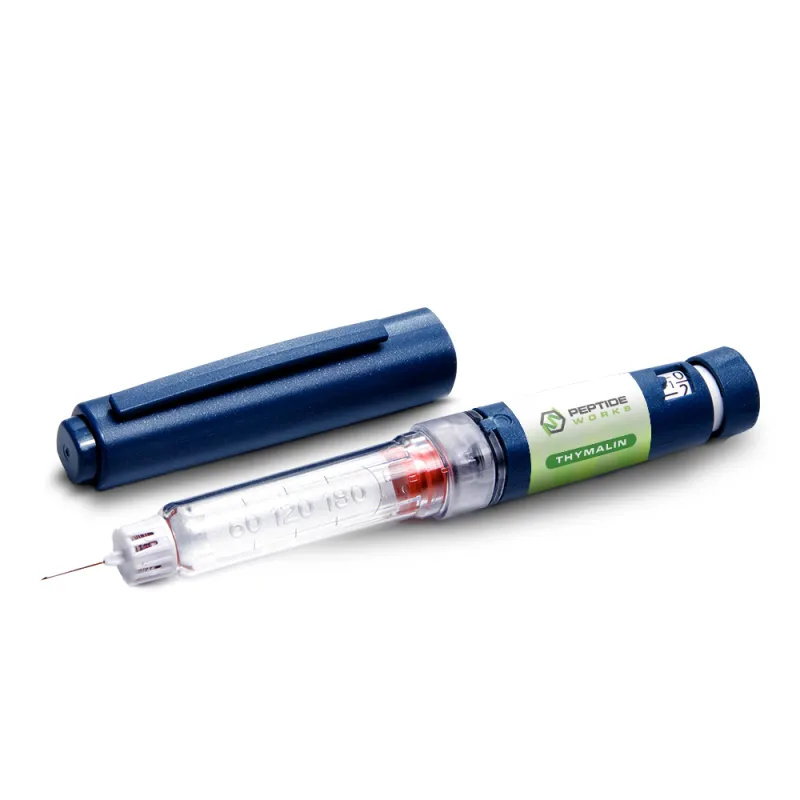
GHK-Cu peptide works directly on skin cells to boost collagen production. The copper peptide activates specific genes that control collagen and elastin production.
Thymalin peptide supports tissue repair through a different pathway by boosting immune function. Studies show Thymalin peptide helps create the right cellular environment for natural healing.
While GHK-Cu peptide targets collagen genes directly, Thymalin works on immune cells that support tissue regeneration. Both peptides help tissue health but through completely different mechanisms.
Research suggests they could work together for comprehensive tissue support. The mention of immune cells and their role in tissue repair highlights how important these cellular defenders are for the entire healing process.
Discover Thymalin Peptide from Peptide Works, known for its potential to enhance immune system performance and promote natural tissue regeneration.
Immune function controls every step of tissue repair through four main phases. First, immune cells rush to injury sites to stop bleeding and clear damage.
Macrophages then eat dead cells and release growth signals for new tissue. These immune cells decide if healing happens fast or slow in damaged tissue.
Research shows GHK-Cu peptide helps immune cells work more efficiently during repair. The copper peptide also prevents excessive inflammation that can slow healing.
Among all immune cells, macrophages stand out as particularly important controllers of the healing process, making them worth examining in detail.
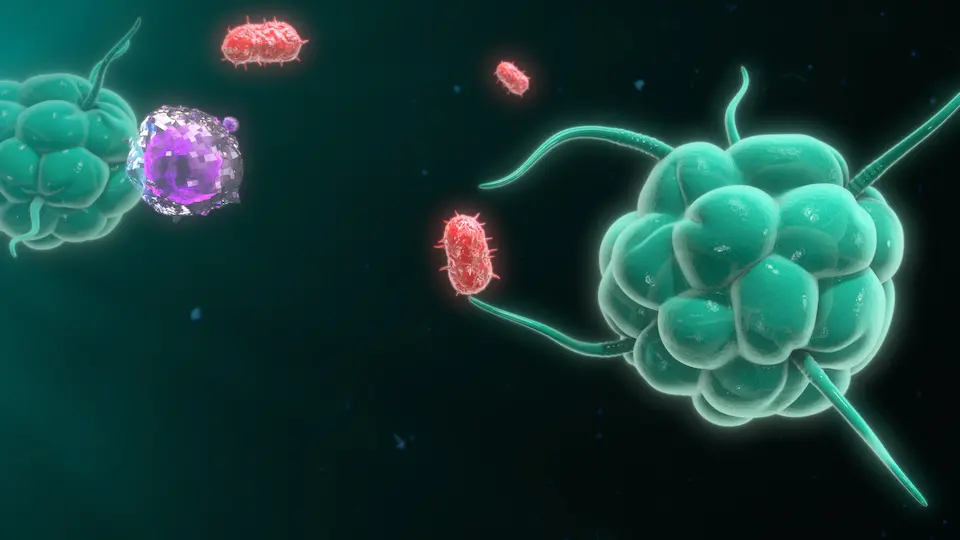
Macrophages act as master controllers of all tissue healing phases. These immune cells switch between two main types during repair.
M1 macrophages arrive first to eat dead cells and fight infection. They release signals that bring more healing cells to damaged areas. M2 macrophages come next to rebuild new tissue and reduce swelling.
GHK-Cu peptide helps switch M1 cells to M2 cells faster for better healing. Research shows this copper peptide reduces healing time by supporting macrophage function. These cells decide if scars form or if tissue heals perfectly.
Understanding how macrophages control healing naturally leads to questions about the actual speed of these repair processes and what researchers can expect to observe.
Studies show GHK-Cu peptide significantly speeds up tissue repair with rapid wound closure compared to normal healing. Studies found wounds treated for 13 days healed much faster than untreated ones.
Clinical trials show visible skin improvements after 8-12 weeks of treatment rather than rapid tissue repair. The copper peptide works faster than most natural healing methods available in animal models.
Research proves it substantially cuts tissue repair time in controlled animal studies. These speed improvements help explain why GHK-Cu peptide works so well for tissue damage research.
These remarkable speed improvements and tissue repair capabilities point to exciting possibilities for what GHK-Cu research might achieve in the coming years.
The future looks bright for GHK-Cu peptide research and applications. Scientists continue exploring new opportunities in this growing field.
Researchers are developing advanced delivery systems like nanoparticles for better results. GHK-Cu peptide shows promise beyond skin care for treating chronic diseases.
Research explores its use for arthritis, heart disease, and brain disorders. Future studies may lead to breakthrough treatments for age-related conditions.
Peptide Works continues supplying research-grade peptides for these exciting scientific advances worldwide.
All products discussed are supplied for research purposes only and are not intended for human use.
[1] Pickart L, Vasquez-Soltero JM, Margolina A. GHK Peptide as a Natural Modulator of Multiple Cellular Pathways in Skin Regeneration. Biomed Res Int. 2015;2015:648108.
[2] Choi HR, Kang YA, Ryoo SJ, Shin JW, Na JI, Huh CH, Park KC. Stem cell recovering effect of copper-free GHK in skin. J Pept Sci. 2012 Nov;18(11):685-90.
[3] Khavinson VK, Linkova NS, Kvetnoy IM, Polyakova VO, Drobintseva AO, Kvetnaia TV, Ivko OM. Thymalin: Activation of Differentiation of Human Hematopoietic Stem Cells. Bull Exp Biol Med. 2020 Nov;170(1):118-122.
[4] Krzyszczyk P, Schloss R, Palmer A, Berthiaume F. The Role of Macrophages in Acute and Chronic Wound Healing and Interventions to Promote Pro-wound Healing Phenotypes. Front Physiol. 2018 May 1;9:419.
ALL CONTENT AND PRODUCT INFORMATION AVAILABLE ON THIS WEBSITE IS FOR EDUCATIONAL PURPOSES ONLY.
DISCLAIMER: These products are intended solely as a research chemical only. This classification allows for their use only for research development and laboratory studies. The information available on our Peptide Works website: https://peptide-works.com/ is provided for educational purposes only. These products are not for human or animal use or consumption in any manner. Handling of these products should be limited to suitably qualified professionals. They are not to be classified as a drug, food, cosmetic, or medicinal product and must not be mislabelled or used as such.
Peptide Works
Related Articles

Best Peptides for Women in Perimenopause: From Libido to Energy
Do you feel drained, struggle with focus, or notice your drive slipping during perimenopause? These changes are some of the

PT-141 for Women in Perimenopause: A Breakthrough for Low Libido
Perimenopause can bring more than just physical changes it often affects how women feel about intimacy, confidence, and connection. Many
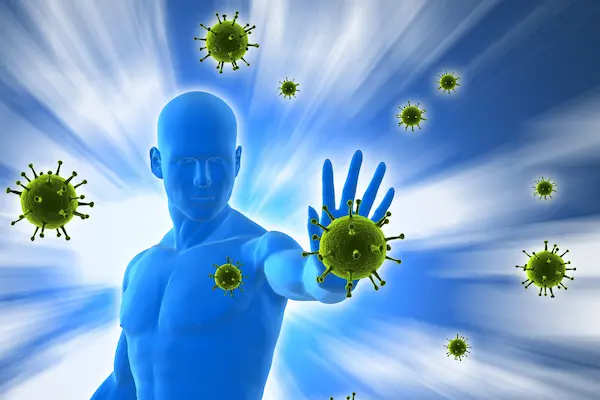
Can Vitamin B12 Immune System Support Enhance the Effects of Thymosin Alpha-1?
The Vitamin B12 immune system link is important because this vitamin plays a crucial role in DNA synthesis, methylation, energy